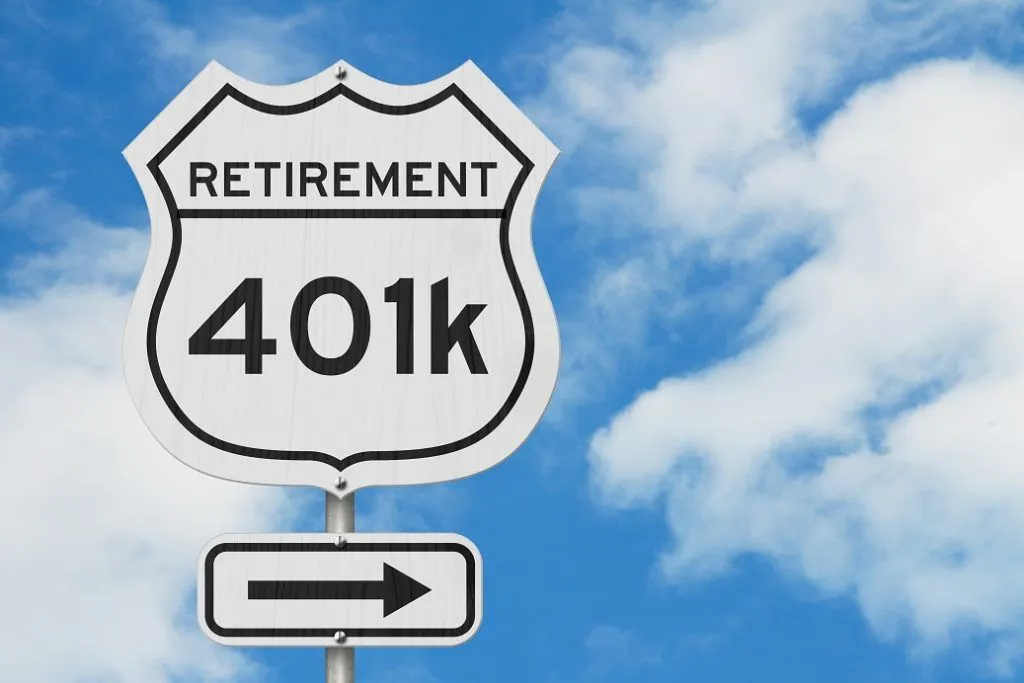Recession-Proof Your 401(k): How to Protect Retirement Savings as Markets Fall.
Stock markets in the U.S. and worldwide have declined since President Donald Trump announced tariffs on most imports, prompting Americans to reconsider their financial strategies.
Following the opening bell on Wall Street on Thursday, the Dow experienced a significant decline during early trading and failed to recover throughout the day, reflecting trends in global markets and increasing anxiety among many Americans. This downturn in the stock market has intensified concerns among investors, particularly as a majority of Americans face financial difficulties. There is a prevailing belief that these taxes will hinder consumer spending and economic expansion, potentially resulting in a recession.
How could it affect your 401(k) accounts?
Here's what you need to know about how to recession-proof your retirement fund and whether you should adjust your accounts.
Is my 401(k) safe?
The recent upheaval has likely increased anxiety for individuals with funds invested in workplace 401(k) plans or other retirement accounts. These accounts are designed for long-term growth, meaning that short-term fluctuations should not significantly impact them. Should you consider making changes to your investments at this time? It is a possibility, but it may not be advisable. First and foremost, withdrawing funds from your account would crystallize any losses and could expose you to tax implications. However, if the current volatility feels overwhelming, you may want to reassess and modify your investment allocation.
How to protect your 401(k) during a stock market downturn
While you don’t want to pull money from your account, you might consider revising your investment mix if the volatility feels overwhelming.
Integrating bonds with your stock investments can offer significant protection against losses while only slightly diminishing potential gains. A portfolio consisting of 60% stocks or stock funds and 40% bonds or bond funds would have yielded an impressive average annual return of 9.4% since 1950, as reported by J.P. Morgan Asset Management.
Smart financial moves to protect your money during economic uncertainty or a looming recession
1. Manage Your Debts Effectively
There are several strategies you can use to reduce debt during uncertain times. One popular method is to pay off smaller balances first to build momentum and boost your confidence. Alternatively, you might focus on debts with the highest interest rates, helping you save more money over time by reducing interest costs.
2. Assess Your Risk Tolerance
Now is a good time to review your investment strategy. Rebalancing your portfolio by gradually shifting funds from more stable assets to those that have declined significantly may help you take advantage of future recoveries. This should be done in line with your personal risk tolerance to avoid making emotional decisions at market lows.
3. Enhance Your Liquidity
Maintaining a strong emergency fund is essential. While the standard advice is to have three to six months of living expenses saved, economic downturns may require a cushion of six to nine months. A larger safety net ensures you’re prepared for unexpected job loss or other financial emergencies.
4. Reassess Your Employment Opportunities
During recessions, job markets often become more competitive. It’s wise to update your resume, learn new skills, and explore additional income streams. Taking on part-time or freelance work can offer financial relief and, in some cases, provide tax deductions for business-related expenses.
5. Consider Postponing Retirement if Feasible
If you're nearing retirement, delaying it by a year or two could be a smart move. Working longer can ease the burden on your retirement savings and give your investments more time to recover. Even a short extension in your career can make a significant difference during periods of economic instability.
What is happening with the stock market?
Following the closure of the U.S. stock market on April 2, Trump revealed a series of tariff increases that extend beyond the newly implemented 10% tariff affecting nearly all imports. The increased tariffs specifically target imports from China, Japan, South Korea, Taiwan, and several European Union nations, including Germany and France, among others.
Notably, higher rates were applied to countries with significant trade surpluses with the United States. Previously, Trump had also announced elevated tariffs on Canada and Mexico, which are among the nation’s and Arizona’s primary trading partners.
Adam Turnquist, chief technical strategist at LPL Financial, said, “After much anticipation, the tariff band-aid was finally ripped off yesterday.” He indicated that the weighted average U.S. tariff rate could potentially escalate from 2.3% in 2024 to nearly 20%. Investors are concerned that this action will lead to increased consumer prices at a time when many Americans are already facing financial difficulties. Furthermore, they anticipate that these tariffs will dampen consumption and economic growth, potentially resulting in a recession.
🔍 Further Reading from Finance Monthly
-
How Trump’s Tariff Pause Could Hit Your Wallet
A closer look at how the tariff freeze—and targeted hikes—may impact everyday prices. -
Inside Global Supply Chains: Harvard Professor Willy Shih Breaks It Down
An expert’s take on how today’s global trade dynamics shape what we pay at home. -
Starlink’s Shine May Be Fading—And Musk Has Himself to Blame
Starlink faces headwinds, and Elon Musk’s bold moves might be backfiring. -
Trump Loses $500 Million Amid Global Tariff Turmoil
Tariff shakeups aren’t just hitting consumers—Trump’s own empire is feeling the heat. -
When Do Banks Report Deposits to the IRS?
Understand what triggers IRS reporting and how it could affect your financial privacy. -
Trump’s Tariff Pause: What It Means for Consumers
Explore how the recent tariff suspension could impact spending, trade, and key sectors.










